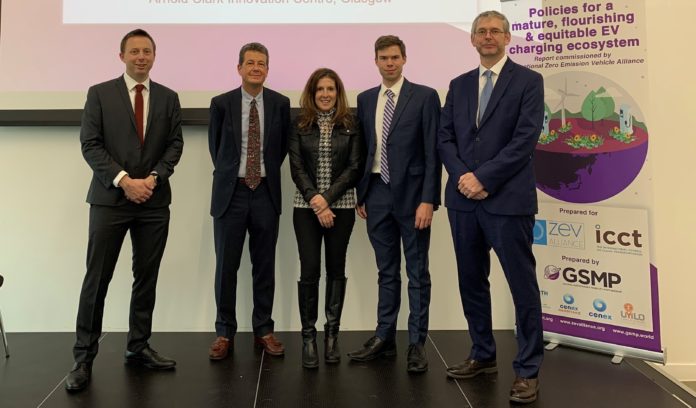
A global partnership of independent, not for profit, transport consultancies has collaborated on policies and recommendations for national and local authorities to grow a mature, flourishing, and equitable electric vehicle charging ecosystem.
The report, “Policies for a mature, flourishing & equitable EV charging ecosystem”, produced by the Global Sustainable Mobility Partnership (GSMP) for the ZEV Alliance, states that a range of policy interventions are needed to ensure equitable access to charging, regardless of land tenure, driver disability or socio-economic status as EVs become a mainstream and charger installations accelerate. Policies should be coordinated to improve charger reliability and enhance interoperability, tackle electricity network constraints, and support poor business cases to ensure that mature ecosystems flourish.
Effective charging ecosystems will match users with charging locations and charging types, therefore, infrastructure policies must differentiate between, and separately address, those who will charge privately and drivers who are reliant on public charging.
The recommendations encourage accelerated plans for, and deployment of, dedicated public charging hubs and public travel corridors to host Fast, Rapid and Ultra-Rapid chargers, as demand from vehicles which cannot be charged privately will increase significantly. This is especially for priority user groups identified by global stakeholders, notably from ‘fleets & staff’, ‘high mileage local’ and ‘long haul’ drivers.
The report was launched ahead of the COP26 Transport Day on November 10th and includes contributions from GSMP members in America, UK, Netherlands, South Africa, and India, citing examples from across the International ZEV Alliance membership.
Robert Evans, CEO of Cenex, based in England, UK, said, “The accelerated electrification of road transport is critical to achieving Net Zero targets and a mature, flourishing, and equitable charging ecosystem is key to that.
“This report offers international perspectives on the policies and best-practice options for electric vehicle charging. It addresses the more challenging areas for electric vehicle charging, including the commercial vehicle opportunity.”
The ZEV Alliance is a group of 18 national, state, and provincial governments committed to a collaborative approach to expand the zero emission vehicles (ZEVs) market and enhance governmental cooperation on relevant policies.
Four key areas for growing an EV charging infrastructure
Building a charging ecosystem
Mature and flourishing charging systems are more likely to exist with specific government focus, most likely through a dedicated Transport or Energy ministry brief. This will locate responsibility for the production and maintenance of an infrastructure strategy, as well as provide a central point from which activity in the different levels of federal, regional and local government can be coordinated.
Improving the business case for public charging
The business case for chargers is essential to get right if the much-needed private investment is to be obtained. Where public intervention is desired, a range of models can be used to distribute the financial, reputational and operational delivery risks. Public authorities wishing to involve themselves actively should seek contractual terms which balance risks and opportunities with their chosen contractor.
Providing equitable access to charging
Delivering equitable access to EV charging is important to ensure the social and environmental benefits of electric mobility are available to all. Without public intervention, chargers will tend to be deployed in more affluent areas where EV ownership is higher. Whilst making equity the focus of EV charging policy is likely to be more challenging in the short-run, it will yield better opportunities and outcomes in the long-term.
Emerging solutions for commercial vehicles
Battery electric truck (BET) uptake is expected to increase in the coming decade, with lighter vehicles leading the way. While the economic case for electrification is strengthening and product choice is growing, stronger policy interventions are needed to accelerate the uptake of heavier BETs.
From an infrastructure perspective, lighter BETs are expected to use the same private and public infrastructure as private vehicles. For heavier BETs, private commercial locations are expected to prefer charging locations where space and the electricity network connection allows. Where this is not possible, a new network of public charging locations will need to be developed taking developments on wireless and catenary charging into account.



